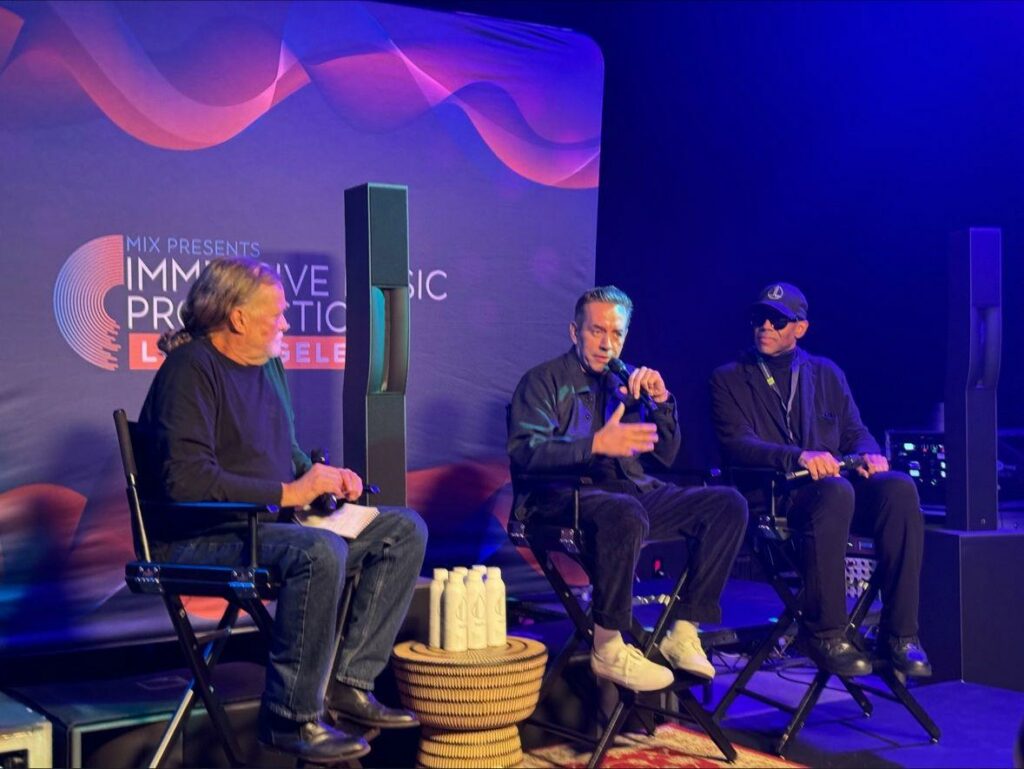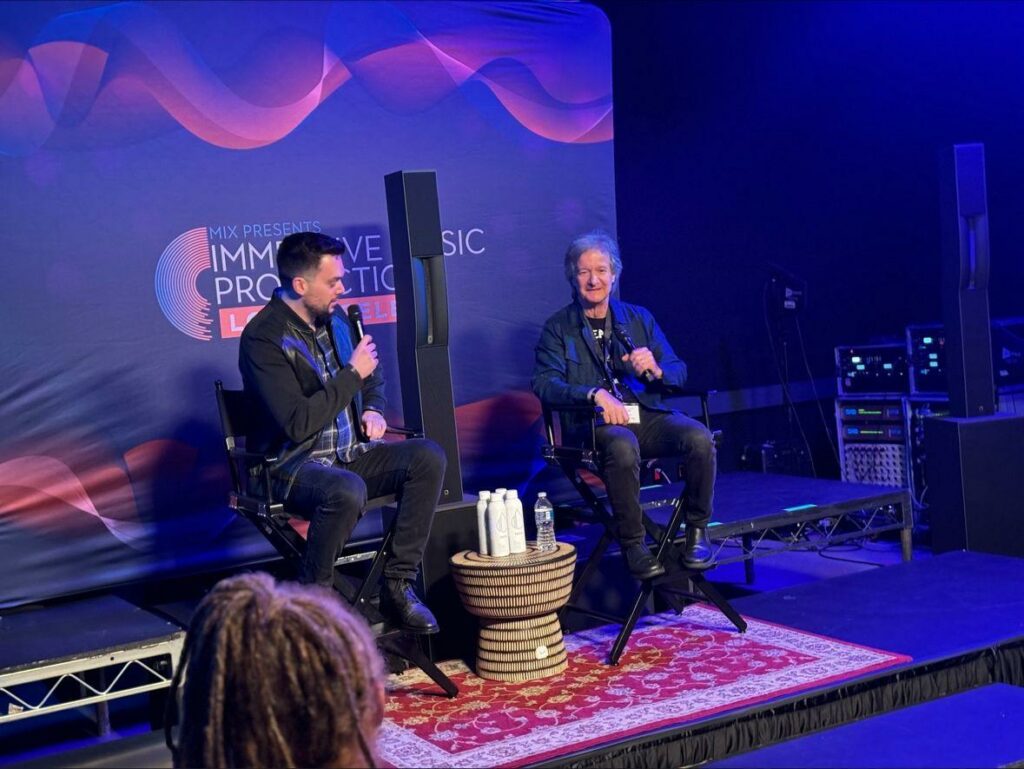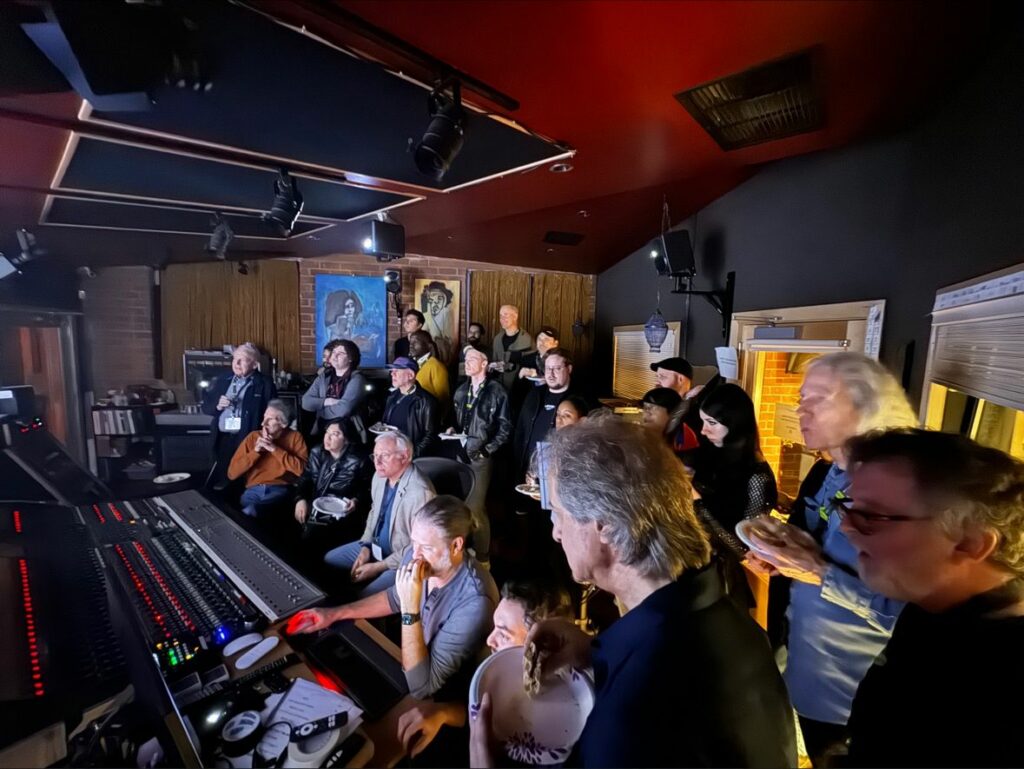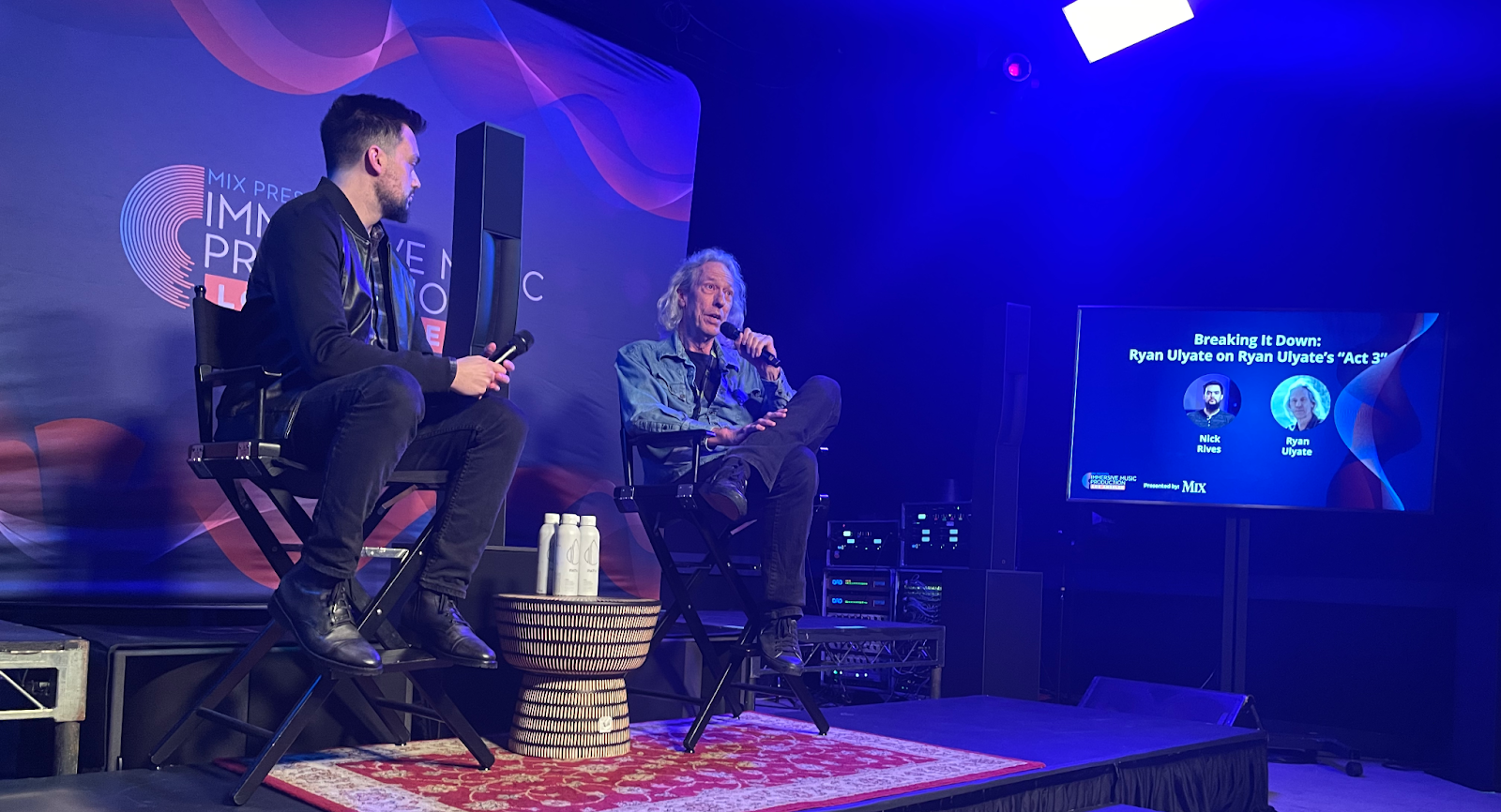On Saturday March 2, I was fortunate enough to attend Mix magazine’s MixLA Immersive Music Production Conference at Universal Music Group’s 2115 facility in Santa Monica.
The event gathered some of the biggest names in immersive music production today, including mixing engineers Bob Clearmountain, David Rideau, Ryan Ulyate, and Manny Marroquin. In between panels, I was honored to meet other longtime pros in the immersive music space such as Nathaniel Kunkel (James Taylor, Keane, etc) and Eric Schilling (Bee Gees, Alicia Keys, etc).
In addition to the main performance space outfitted with a 13.1.10(!) immersive monitoring system, the 2115 facility also contained a number of showrooms where exhibitors such as API, SSL, and Kali Audio demonstrated new gear.
PANEL #1: IMMERSIVE MUSIC: THE ARTIST & THE ENGINEER
The first panel I attended featured producer Jimmy Jam (Janet Jackson, Boyz II Men, Usher, etc) and Grammy-winning engineer Manny Marroquin (Seal, John Legend, Mary Mary, etc), with Kenny as moderator. Both men showed great enthusiasm for the immersive format, though they also spoke at length about the pitfalls and challenges of translating certain genres to the immersive space.
Jam and his longtime producing/songwriting partner Terry Lewis were relatively-early adopters of the format, having created an immersive version of their Volume One album back in 2021.

Jam interestingly also mentioned that Atmos remixes of Janet Jackson’s classic albums from the 1980s were in the works, a fact of which I was previously unaware.
Purchase Jam & Lewis’ Volume One in the IAA Shop!
PANEL #2: CREATIVE INTENT: THE STEREO & IMMERSIVE MIXES
The second panel was again moderated by Kenny, featuring immersive mix engineers Steve Genewick, Dave Way, Dennis “ROC.am” Jones, and Eric Schilling. Jones spoke about the challenges of remixing some classic James Brown records in Atmos, as they were recorded on analog tape with a limited track count.

One especially interesting part of this panel was each mixer discussing their use of center and LFE channels in Atmos. They all seemed to prefer using the center speaker as more of a support for the front ‘phantom’ center, with Way mentioning that around 20% of his dry lead vocal would be panned to the center channel. This stands in stark contrast to other immersive mixes like Bob Clearmountain and Steven Wilson, who make heavy use of the center speaker for isolated vocals and other lead instruments.
PANEL #3: ROXY MUSIC'S AVALON IN DOLBY ATMOS
The third panel of the day centered around Roxy Music’s Avalon (1982), newly-remixed in Dolby Atmos by legendary engineer Bob Clearmountain. Fans may recall that Clearmountain and producer Rhett Davies previously remixed Avalon in 5.1 surround sound for a Super Audio CD release way back in 2003. Nick Rives, Universal Music’s Director of Audio Engineering, served as moderator.
The panel began with a short excerpt of the song “Avalon” played over the 13.1.10 immersive system, and–even though I wasn’t seated in the best location–it sounded amazing. The rhythm section and lead vocal stayed mostly in the front soundstage, while the side and rear speakers were deployed for additional elements such as rhythm guitar, saxophone, and background vocals.

Clearmountain interestingly spoke a bit about his decision to place Andy McKay’s saxophone solo in the right rear speaker and Yanick Étienne’s backing vocals in the left rear speaker. He mentioned that head-panning ‘lead’ parts or solos behind the listener doesn’t always work, but in this particular instance those two elements play off each other well.
Whereas the 5.1 surround mix of Avalon was created from a '90s-era digital copy of the multitrack, Clearmountain revealed to me in a brief conversation after the panel that the new Atmos mix was completely rebuilt from 96-khz/24-bit transfers of the newly-found analog tapes. Additionally, the short segue song "India" is now presented as a true remix from the individual elements rather than simply swirling the stereo mix around the room (as was done for the 5.1 SACD).
PANEL #4: RYAN ULYATE'S ACT 3 IN DOLBY ATMOS
The fourth and final panel I attended centered around producer/engineer Ryan Ulyate’s new solo record Act 3, which was recorded and mixed especially for Dolby Atmos. Ulyate has been recording, mixing and producing music professionally since 1978, and in 2005 he began a decade-long collaboration with Tom Petty that included mix and production credits on the Mojo (2010) and Hypnotic Eye (2014) studio albums.
The panel began with a playback of the opening track “Dreamland,” which Ulyate described as his “California song” and an ode to surf-rock acts like The Beach Boys. The track began with layered vocals from all around, before blasting off into full immersion with the lead guitar fills popping out of the height speakers.

I was thrilled to see Ryan give a shoutout to IAA, as we were able to release Act 3 as a hi-res download in our shop just prior to the Grammy submission deadline of September 15, 2023. Act 3 received a nomination for Best Immersive Audio Album, though the award ultimately went to Eric Schilling for The Diary Of Alicia Keys.
Purchase Ryan Ulyate’s Act 3 (Immersive Edition) in the IAA Shop!
AFTERPARTY: APOGEE STUDIOS
After the event concluded, an afterparty was held at the nearby Apogee Studios. It was amazing to sit in front of Bob Clearmountain's SSL desk, where he played Atmos selections from albums such as Huey Lewis & The News' Sports (1984), Bryan Adams' Reckless (1984), Bob Marley & The Wailers' Legend (1984), and more!

CONCLUSION
There were a number of other panels I was unable to attend due to time constraints, including David Rideau discussing his Dolby Atmos remix of Miles Davis’ Kind Of Blue (1959) and Sony demonstrating their “Virtual Mixing Environment” software in Studio 4.
Ultimately, the high attendance and presence of top industry officials at this event can only suggest that immersive music is indeed here to stay for the foreseeable future!

